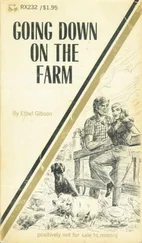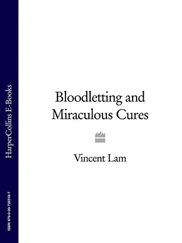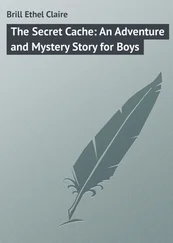Ethel Vincent - Newfoundland to Cochin China
Здесь есть возможность читать онлайн «Ethel Vincent - Newfoundland to Cochin China» — ознакомительный отрывок электронной книги совершенно бесплатно, а после прочтения отрывка купить полную версию. В некоторых случаях можно слушать аудио, скачать через торрент в формате fb2 и присутствует краткое содержание. Жанр: Путешествия и география, foreign_antique, foreign_prose, на английском языке. Описание произведения, (предисловие) а так же отзывы посетителей доступны на портале библиотеки ЛибКат.
- Название:Newfoundland to Cochin China
- Автор:
- Жанр:
- Год:неизвестен
- ISBN:нет данных
- Рейтинг книги:5 / 5. Голосов: 1
-
Избранное:Добавить в избранное
- Отзывы:
-
Ваша оценка:
- 100
- 1
- 2
- 3
- 4
- 5
Newfoundland to Cochin China: краткое содержание, описание и аннотация
Предлагаем к чтению аннотацию, описание, краткое содержание или предисловие (зависит от того, что написал сам автор книги «Newfoundland to Cochin China»). Если вы не нашли необходимую информацию о книге — напишите в комментариях, мы постараемся отыскать её.
Newfoundland to Cochin China — читать онлайн ознакомительный отрывок
Ниже представлен текст книги, разбитый по страницам. Система сохранения места последней прочитанной страницы, позволяет с удобством читать онлайн бесплатно книгу «Newfoundland to Cochin China», без необходимости каждый раз заново искать на чём Вы остановились. Поставьте закладку, и сможете в любой момент перейти на страницу, на которой закончили чтение.
Интервал:
Закладка:
Howard Vincent
Newfoundland to Cochin China / By the Golden Wave, New Nippon, and the Forbidden City
CHAPTER I.
OUR PREMIER COLONY
Land in sight when I awake at 5 a.m., a grey streak across the oval of the port. With what intense satisfaction we gaze on the line of barren rock, which has a suspicion of green horizon on the summit of the grey cliffs, only those can picture who have been at sea for some time.
Presently we glide past Cape Race, with its neat signal station on the cliffs, and know that in a few minutes the arrival of our ship, the Nova Scotian , will be signalled at St. John's. We see a few fish-curing sheds on the tiny bays of yellow sand, and some white specks that represent cottages. They are dreary little settlements, and near them the fishing-boats pass us, returning home after their rough night's work, for this is the inhospitable coast of Newfoundland, the Premier Colony of England.
As the morning wears on and the sun rises, it is a pretty scene. The great blue restless ocean, with its mighty Atlantic swell, lashing itself in spray and foam, with a long white line breaking and disappearing, re-appearing and dying against the bleak rock-bound coast. Sometimes the cliffs are formed of strata of grey lava or limestone, at others they are of rich red sandstone, colours that are intensified with the peculiar clearness of the atmosphere. Above all, there is a pure blue sky, with white clouds chasing each other and casting shadows along the coast. Now and again we pass large fishing luggers sailing swiftly by in the brisk breeze. Some have tawny orange or deep brown sails, others pure white ones, looking like wings spread in the sunlight, gliding swiftly and silently past. It is a rich bit of colouring to eyes tired and sad with the monotony of an impenetrable, all-surrounding line of sky and ocean.
The approach to St. John's is romantic. The barrier of cliffs still rises to larboard, without an apparent break or indentation, whilst they say that we shall be anchored at the wharf in ten minutes. Another scanning of the coast reveals at length two rocks rising higher than the others, with a slight fall between them. The ship ploughs along broadside, and until exactly opposite this opening. With a few final plungings, and last rollings and tossings, she is brought sharply round, and we face the harbour of St. John's. The great brown rocks, sparsely sprinkled with green, rise up forbidding our entrance, and inside these is another amphitheatre of granite against which the town of St. John's is built. The line of wharves forms a black foundation. The haven where we would be lies peaceful and blue in the midst. The first sight of St. John's and the last, always include the twin red towers of the Roman Catholic Cathedral standing out on a platform above the town.
Now we are passing immediately under the cliffs, with which we make very near acquaintance as we go through the Narrows. To add to the difficulties of this passage, there is a rock at the narrowest part called the Great Chain Rock, where in olden times a chain was fastened across the harbour to guard the entrance. Another and greater danger, a sunken rock, lies hidden under the smooth water. A gun is fired from the lofty signal station, to tell anxious hearts of the incoming mail, and with a large part of the population of St. John's on the wharf (for they always gather to greet and speed the fortnightly steamer) we land in Newfoundland.
On the kind invitation of Lady O'Brien and the Governor, we are driven by Mr. Cecil Fane, his Excellency's aide-de-camp and able secretary, to Government House. This is a handsome stone building, looking more so amongst its surroundings of wooden houses, standing above the town in its own grounds. The view from the house into the open country is charming. In the far distance a range of purple mountains. Then patches of dark pine forests, alternating with green, park-like spaces. The Roman Catholic cemetery with its wooden crosses lying on a hillside. Beneath it in a basin, the little blue lake of Quidi Vidi, which plays such an important part in the social life of St. John's. Here they yacht and boat, fish and bathe in summer. In winter they use it to sleigh, skate, and toboggan on, but above all they hold their annual regatta here. It is fixed for next week, and may be called the Epsom of Newfoundland. The population from all parts of the Island gathers to see it. In olden days each merchant chief had his yacht and crew of employés, and partisanship ran high, but now the races belong to the clubs in town, such as the Temperance, Athenæum, etc.
In the afternoon the Hon. Augustus Harvey took us for a beautiful drive of twenty-eight miles across the Island. Who, seeing that bare rocky coast in the morning, would have believed that the interior of the Island could be so lovely! We drove along a good macadamized road, passing the pretty white wooden houses with red roofs and neat palings, the country residences of the merchants. Here is the one belonging to Mr. Baird of lobster fame. Each house has a flagstaff and floating flag; indeed, St. John's is called the city of flags, for everyone who is anybody possesses one, and flies it proudly when in residence. There are great clumps of purple iris growing wild by the roadside. We pass through many plantations of fir trees, junipers and larches. The great feature of Newfoundland scenery is water. It is everywhere. Flowing in rivulets, covered with reeds by the roadside, enclosed in hollows in the hills as lakes, hurrying from the mountains as a gushing torrent, protesting angrily in rapids and foam against the rocks in its course. It is the great feature and the great charm, and one-third of the Island is said to be water. In one drive you may count as many as two dozen lakes.
At times, as you look round, the country reminds you of Scotland, with the purple blue mountains in the distance and the dark patches of fir trees. At others there is a marshy and barren bit of bog land, with cabins recalling the wilds of Connemara. Then some scene in the Tyrol is brought before you; high mountains and deep valleys filled with dense pine forests, a lake hidden in their midst. Frequently a chain of mountains has a similar chain of lakes winding at its base. These lakes are divided by a narrow isthmus of land, or connected by flowing streams. They are full of fish of all descriptions. If England is the paradise for horses, this is the paradise for fishermen. Other sport can be obtained by the partridge-shooting in August and September. The partridges resemble Scandinavian ptarmigan. There are also wild deer to be had by stalking the mountains forty miles in the interior.
We always think of Newfoundland as the land of fog, lobster, and cod, and know it best in connection with the breed of Newfoundland dogs. This race is degenerating and threatened with extinction, and there are scarcely any good specimens of these beautiful and intelligent dogs left in the island. But I think few have any idea what extremely beautiful scenery there is, and when there is no fog, the atmosphere is remarkable for extreme dryness and clearness, giving the most vivid colouring and the sharpest delineations to the mountains.
This was the case to-day; and as we drove to the Twenty Mile Lakes, so called because they are twenty miles round, I thought I had rarely seen brighter, prettier, or more varied landscape. The water of St. John's comes from these lakes, and they claim to have the purest supply of any town in the world. Instead of being bare and desolate, the country is green and smiling. There are a few widely scattered farm-houses, but as a whole not much cultivation is attempted.
After a long ascent, we gain a glimpse of the sea. We have been driving across a narrow mainland, from the ocean to the ocean, and before us, gleaming softly in the evening sunlight, is the beautiful Bay of Conception. The surrounding cliffs are quite purple, the ocean is a golden sea broken up by green islands. Far below us is a cluster of houses, a fishing settlement, with a lobster factory and some flakes run out over the rocks. There are boats idly rocking at the quay, whilst others are catching bait for a fishing schooner, lying at anchor in the bay. They told us of one of the governors who was brought here within sight of this bay to die. He thought it so beautiful. So did we. Then we drove home quickly in the dusk, late for dinner, but charmed with the island. We found Sir Terence and Lady O'Brien just arrived from a few days' cruise by the "Out-ports" on the coast. They give us wonderful descriptions of the grandeur of the scenery. The government steam yacht, in which they journeyed, will start with the judges on circuit in a few days.
Читать дальшеИнтервал:
Закладка:
Похожие книги на «Newfoundland to Cochin China»
Представляем Вашему вниманию похожие книги на «Newfoundland to Cochin China» списком для выбора. Мы отобрали схожую по названию и смыслу литературу в надежде предоставить читателям больше вариантов отыскать новые, интересные, ещё непрочитанные произведения.
Обсуждение, отзывы о книге «Newfoundland to Cochin China» и просто собственные мнения читателей. Оставьте ваши комментарии, напишите, что Вы думаете о произведении, его смысле или главных героях. Укажите что конкретно понравилось, а что нет, и почему Вы так считаете.












